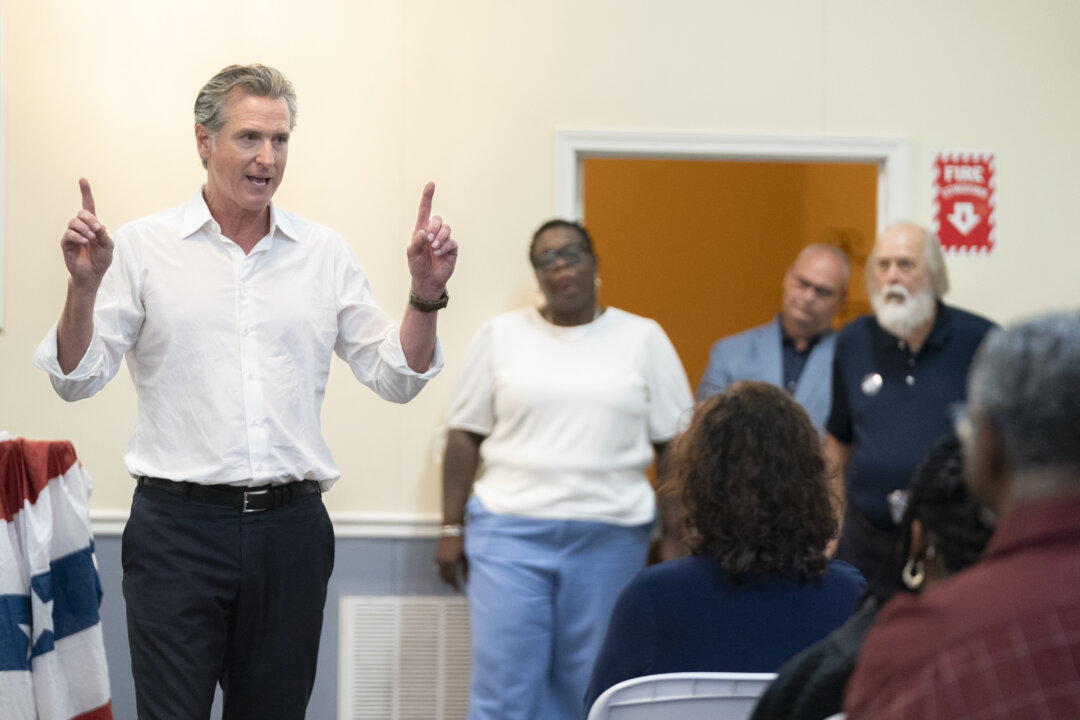
Some Democrats are beginning to make early moves toward the 2028 presidential race, with potential contenders stepping into key primary states months after former Vice President Kamala Harris’s loss to Republican President Donald Trump in 2024.
Though none have officially declared candidacies, their travel and outreach are widely seen by strategists as early attempts to claim space in a race with no heir apparent.
California Gov. Gavin Newsom spent July 8–9 touring rural South Carolina, a state that helped revive Joe Biden’s 2020 candidacy and remains a key proving ground for Democrats. Newsom joined the South Carolina Democratic Party’s “On The Road” tour through several counties as part of an effort to spotlight what party leaders called a contrast between Republican neglect and Democratic governance. State party officials said Newsom’s record leading the nation’s largest state made him a powerful messenger.
Meanwhile, Arizona Sen. Ruben Gallego will visit the Iowa State Fair later this summer, according to the Des Moines Register, following earlier appearances by former Transportation Secretary Pete Buttigieg and Minnesota Gov. Tim Walz—both seen as possible candidates.
Iowa and South Carolina are traditional early primary states, making them critical stops for any Democrat hoping to build national momentum and test their ability to connect with voters beyond their home turf.
Kentucky Gov. Andy Beshear will also make visits in the coming weeks to South Carolina, including a speaking appearance at the Blue Thursday event held by the state Democratic Party’s legislative women’s caucus in Pawleys Island on July 17. Beshear, who launched a podcast this year and has not ruled out a presidential bid, is among a handful of governors building platforms that extend beyond their state lines.
Adin Lenchner, a Brooklyn-based Democratic strategist with 15 years of experience, said the early activity is no surprise.
“The Democratic Party doesn’t have a singular post-2024 roadmap, so naturally, you’re seeing potential candidates test their own brand of leadership, their own vision for where the party should go next, and their ability to resonate beyond their home turf,” he said.
“Running for president is a tough, unforgiving business, and the folks who take it seriously know they need to start logging their 10,000 hours now. The warmup definitely has begun in the preseason and the smart candidates know you don’t show up to Iowa cold.”
Alyssa Batchelor-Causey, a Democratic strategist with Hill and State Strategies, said it’s not too early for hopefuls to begin laying the groundwork for a campaign. “Gov. Gavin Newsom, Secretary Pete Buttigieg, and Gov. JB Pritzker are favored to run in 2028, but I expect to see a pretty crowded primary.”
She said she believed that the 2028 nominee will be someone who centers their platform on working Americans and has a strong, optimistic vision for the future of the country, and can push back against Republicans.
“Whoever the nominee is, they will have to be someone that’s willing to be bold, solutions-oriented, and doesn’t waver under pressure,” Batchelor-Causey said, adding that “Americans want a Democratic Party that bites back.”
Max Weisman, a Philadelphia-based communications consultant and political strategist, said the early moves reflect the party’s lack of a singular direction after 2024.
“Not only has the presidential campaign cycle become much longer in recent years, but as the minority party without a clear and present leader, Democratic candidates have a significant amount of work—which requires a considerable amount of time—to message-test and reconnect with voters,” he told The Epoch Times.
“I think potential candidates will likely offer anti-Trump and anti-GOP messaging, but it’s a good time to win back voters the Democratic Party has lost,” Weisman added. “By testing new messages, finding new mediums to communicate, and forming new partnerships, a leader will emerge by connecting with the modern voter in a genuine way that promotes a positive vision for the future.”
He said one of the biggest challenges for any potential front-runner will be “rewriting the playbook” entirely.
“After a disastrous cycle for Democrats, a 2028 presidential candidate will need to use next year’s midterms and key moments leading up to the next presidential election cycle to craft a new message and find new mediums to communicate this message.”
At a Tuesday event in rural South Carolina, Rep. Jim Clyburn (D-S.C.) introduced Newsom by saying, “As we go around welcoming these candidates who are running for president,” prompting Newsom to make a surprised face and jokingly glance behind him, drawing laughter from the crowd. Though Newsom has avoided declaring plans to run, the exchange highlighted how he is seen by some of the party’s most prominent leaders.
A recent Emerson College poll showed Buttigieg narrowly ahead in early Democratic primary polling, with 16 percent support. Harris followed at 13 percent, and Newsom at 12 percent. Nearly a quarter of voters said they were undecided.
Several likely contenders, such as Newsom, Beshear, and Michigan Gov. Gretchen Whitmer, have begun leveraging podcasts and media appearances to expand their reach, trying to connect with younger or disaffected voters and test new messaging strategies.
The wide-open field is already showing signs of ideological variation. A recent upset in New York’s Democratic mayoral primary, where democratic socialist Zohran Mamdani defeated former Gov. Andrew Cuomo, exposed continued divides between establishment Democrats and progressive challengers.
Original News Source Link – Epoch Times
Running For Office? Conservative Campaign Consulting – Election Day Strategies!
